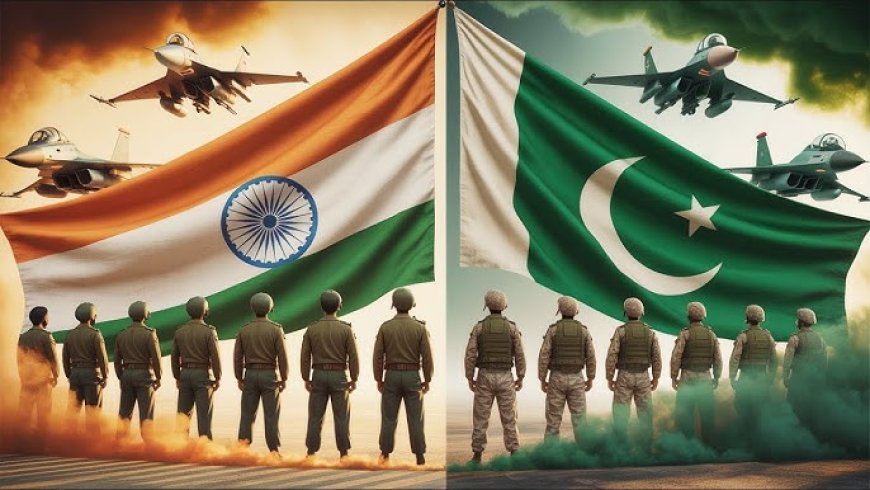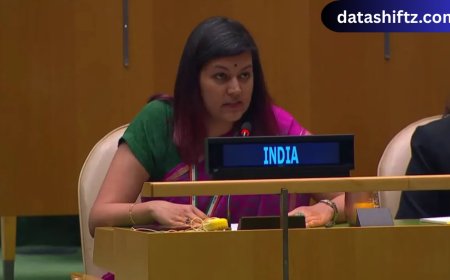India–Pakistan Tensions in May 2025: A Comprehensive Overview

Introduction
In May 2025, India and Pakistan experienced one of their most intense military confrontations in recent decades. The escalation, triggered by a deadly attack in Indian-administered Kashmir, led to cross-border strikes, diplomatic fallout, and heightened global concern over the potential for a broader conflict between the two nuclear-armed neighbors. This article provides a detailed analysis of the events, responses, and implications of the May 2025 India–Pakistan tensions.
Background: The Catalyst for Conflict
On April 22, 2025, a brutal attack in Pahalgam, Kashmir, resulted in the deaths of 26 Hindu tourists. India attributed the assault to Pakistan-based militant groups, specifically Lashkar-e-Taiba and Jaish-e-Mohammed. Pakistan denied any involvement, but the incident reignited longstanding hostilities between the two nations. In response, India launched "Operation Sindoor" on May 7, targeting alleged terrorist infrastructure across nine locations in Pakistan and Pakistan-administered Kashmir. The operation utilized advanced weaponry, including Rafale jets equipped with SCALP missiles and BrahMos cruise missiles.
Military Engagements and Casualties
India's Offensive: Operation Sindoor
India's precision strikes aimed to dismantle terrorist camps without escalating into a full-scale war. Targets included facilities in Bahawalpur and Muridke, believed to be strongholds of Jaish-e-Mohammed and Lashkar-e-Taiba, respectively. India claimed the elimination of over 100 militants and the destruction of key terrorist infrastructure.
Pakistan's Response
Pakistan condemned the strikes as violations of its sovereignty and vowed to retaliate. Subsequent reports indicated that Pakistan's military engaged in cross-border shelling and claimed to have shot down multiple Indian aircraft, including Rafale and MiG-29 jets. India acknowledged the loss of aircraft but attributed some crashes to technical failures.
Casualty Overview
| Country | Civilian Deaths | Military Deaths | Notable Incidents |
|---|---|---|---|
| India | 21 | 5 | Shelling in Poonch district; damage to schools and religious sites |
| Pakistan | 40 | 11 | Damage to a mosque in Muzaffarabad; casualties in Bahawalpur and Muridke |
Diplomatic Fallout and International Reactions
Suspension of Bilateral Agreements
In the wake of the hostilities, India suspended the Indus Waters Treaty, a long-standing water-sharing agreement with Pakistan, citing Pakistan's alleged support for cross-border terrorism. Additionally, both nations expelled diplomats and accused each other of ceasefire violations, further straining diplomatic ties.
Global Mediation Efforts
The international community, including the United States and China, urged both countries to de-escalate tensions. A U.S.-brokered ceasefire was announced on May 10, with both sides agreeing to halt military operations. Despite the ceasefire, mutual distrust persisted, and sporadic violations were reported.
Public Sentiment and Media Narratives
Nationalistic Rhetoric
In both countries, nationalistic sentiments surged. India's government emphasized its commitment to combating terrorism, while Pakistan framed its response as a defense of sovereignty. Media outlets in both nations propagated narratives supporting their respective government's actions, contributing to a polarized public discourse.
Misinformation and Censorship
The conflict saw a proliferation of misinformation and censorship, with both governments controlling narratives and limiting independent reporting. This information warfare complicated efforts to ascertain the full scope of events and hindered transparency.
Strategic and Regional Implications
Shift in Military Doctrines
The May 2025 conflict marked a departure from previous engagements, with both sides employing advanced weaponry and targeting broader areas. Analysts noted that traditional "red lines" were crossed, raising concerns about the potential for future escalations without clear boundaries.
Regional Alliances and Support
During the conflict, China and Turkey openly supported Pakistan, while India's expectations of support from the Quad alliance (comprising the U.S., Japan, Australia, and India) were unmet. This realignment highlighted shifting geopolitical dynamics and the complexities of regional alliances.
Conclusion
The May 2025 India–Pakistan conflict underscored the fragility of peace between the two nations and the potential for rapid escalation. While the ceasefire brought temporary relief, underlying issues, including territorial disputes and terrorism, remain unresolved. Sustainable peace will require sustained diplomatic engagement, confidence-building measures, and a commitment to addressing core concerns through dialogue rather than military means.





























